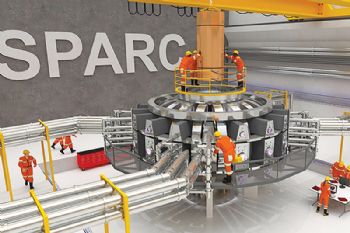
Progress towards the holy grail of unlimited fusion power — potentially an inexhaustible and zero-carbon source of energy — could be about to take a leap forward.
Development of this combustion-free source of energy is now on a faster track, thanks to a collaboration between MIT and a new company called Commonwealth Fusion Systems.
CFS (
www.cfs.energy) will join with MIT to carry out research leading to a new generation of fusion experiments and power plants based on advances in high-temperature superconductors — work made possible by decades of US federal government funding for basic research.
CFS has attracted an investment of $50 million from the Italian energy company Eni, and it continues to seek the support of additional investors.
It will fund fusion research at MIT as part of this collaboration, with an ultimate goal of rapidly commercialising the energy source and establishing a new industry.
Fusion involves light elements (such as hydrogen) being smashed together to form heavier elements (such as helium) and releasing prodigious amounts of energy in the process.
This produces net energy only at temperatures of hundreds of millions of degrees Celsius — too hot for any solid material to withstand.
To get around that, fusion researchers use magnetic fields to hold the hot plasma in place and keep it from coming into contact with any part of the donut-shaped chamber.
The new venture aims to build a compact device capable of generating 100MW of fusion power.
If all goes according to plan, it will demonstrate key technical milestones needed to ultimately achieve a full-scale prototype of a fusion power plant that could set the world on a path to low-carbon energy.
CFS will support more than $30 million of MIT research over the next three years to develop the world’s most powerful large-bore superconducting electromagnets — the key component that will enable the construction of a much more compact fusion device called a tokamak.
The magnets, based on a superconducting material that has only recently become available commercially, will produce a magnetic field four-times as strong as that used in any existing fusion experiment, enabling a more than 10-fold increase in the power produced by a tokamak of a given size.
Once the superconducting electromagnets have been developed, MIT and CFS will design and build a compact and powerful fusion experiment called SPARC.
This will be used for what is expected to be a final round of research enabling the world’s first commercial power-producing fusion plants to be designed.